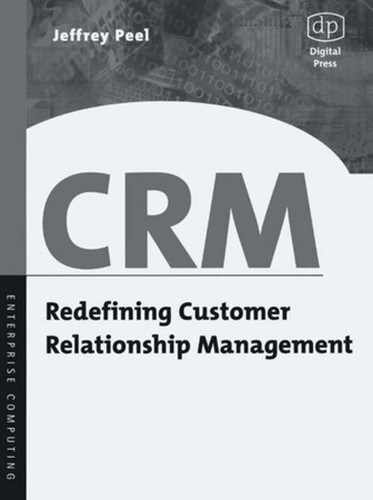
10.5 New perspectives on loyalty 161
to very methodically record interactions at a highly mechanical level~length
of call, nature of call, response given, among other things. Agents are rarely
required to quality check the interaction or to update the customer history in
terms of their perception of the state of the customer relationship.
How would this be accomplished? One way would be to have customer-
facing staff, such as direct sales staffor contact-center staff, complete a series of
dialogs that they instigate. The completion of these dialogs might trip an
event or simply update the customer profile. For example, a customer calls or
e-mails and indicates dissatisfaction with a delivery. The agent would select a
dissatisfaction dialog, which would at the same time create an auto alert for
the logistics department, which would be charged with resolving the query. At
the same time, the contact agent would be obliged to close the dissatisfaction
case through an outcome~a call to the customer to verify satisfactory event
closure or a letter detailing action taken and resolution. However, the interac-
tion and subsequent dialog will have altered the customer's scoring in the
context of other attributes or scores associated with the customer.
10.5.2 Purchasing history
Active purchasing or constantly improving purchasing behavior indicates a
customer who is happy but potentially one who may feel very undervalued if
the strength of purchasing is not recognized. Taking remedial action when a
customer's spending diminishes is not adequate and not best practice. There-
fore, thresholds need to be put in place for analytics systems to identify
high-performing or improving patterns.
The challenge is to identify such customers and reward them in a timely
fashion. Reward can often simply mean saying thanks and letting the custom-
ers know how valuable their business is and how important they are to the
business. It may also require the customers to have special service teams, spe-
cial payment arrangements, or enhanced service plans or rewards. However,
the nature of spending is itselfa diagnostic research tool that is a strong indica-
tor of loyalty.
10.5.3 Interaction patterns/proximity to decision points
Interaction patterns can be very informative in revealing a customer's propen-
sity to engage and the nature of that engagement. Some engagement patterns
will indicate a degree of dissonance in the relationship, potentially indicating a
customer relationship that requires just too much servicing to maintain. For
example, a customer who constantly complains despite constantly resolved
I Chapter 10
..................Content has been hidden....................
You can't read the all page of ebook, please click here login for view all page.
